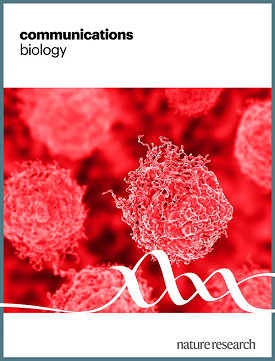Analyses of GWAS signal using GRIN identify additional genes contributing to suicidal behavior
IF 5.2
1区 生物学
Q1 BIOLOGY
引用次数: 0
Abstract
Genome-wide association studies (GWAS) identify genetic variants underlying complex traits but are limited by stringent genome-wide significance thresholds. We present GRIN (Gene set Refinement through Interacting Networks), which increases confidence in the expanded gene set by retaining genes strongly connected by biological networks when GWAS thresholds are relaxed. GRIN was validated on both simulated interrelated gene sets as well as multiple GWAS traits. From multiple GWAS summary statistics of suicide attempt, a complex phenotype, GRIN identified additional genes that replicated across independent cohorts and retained biologically interrelated genes despite a relaxed significance threshold. We present a conceptual model of how these retained genes interact through neurobiological pathways that may influence suicidal behavior, and identify existing drugs associated with these pathways that would not have been identified under traditional GWAS thresholds. We demonstrate GRIN’s utility in boosting GWAS results by increasing the number of true positive genes identified from GWAS results. Using the software GRIN, GWAS results are refined by reducing false positive genes using biological network topology, allowing users to lower GWAS significance thresholds to identify additional genes associated with complex traits

利用 GRIN 对 GWAS 信号进行分析,发现了更多导致自杀行为的基因。
全基因组关联研究(GWAS)能确定复杂性状的基因变异,但受到严格的全基因组显著性阈值的限制。我们提出了 GRIN(通过互动网络完善基因组),它能在放宽全基因组关联研究阈值时,保留通过生物网络紧密连接的基因,从而提高扩展基因组的可信度。GRIN 在模拟的相互关联基因集和多个 GWAS 特征上都得到了验证。从自杀未遂这一复杂表型的多个 GWAS 统计摘要中,尽管放宽了显著性阈值,GRIN 还是发现了在独立队列中重复的额外基因,并保留了生物学上相互关联的基因。我们提出了一个概念模型,说明这些被保留的基因如何通过可能影响自杀行为的神经生物学通路相互作用,并确定了与这些通路相关的现有药物,而这些药物在传统的 GWAS 阈值下是无法确定的。我们通过增加从 GWAS 结果中鉴定出的真正阳性基因的数量,证明了 GRIN 在提升 GWAS 结果方面的实用性。
本文章由计算机程序翻译,如有差异,请以英文原文为准。
求助全文
约1分钟内获得全文
求助全文
来源期刊

Communications Biology
Medicine-Medicine (miscellaneous)
CiteScore
8.60
自引率
1.70%
发文量
1233
审稿时长
13 weeks
期刊介绍:
Communications Biology is an open access journal from Nature Research publishing high-quality research, reviews and commentary in all areas of the biological sciences. Research papers published by the journal represent significant advances bringing new biological insight to a specialized area of research.
 求助内容:
求助内容: 应助结果提醒方式:
应助结果提醒方式:


